 
Western Body & Hoist Company
Los Angeles, California
By Eric Voytko
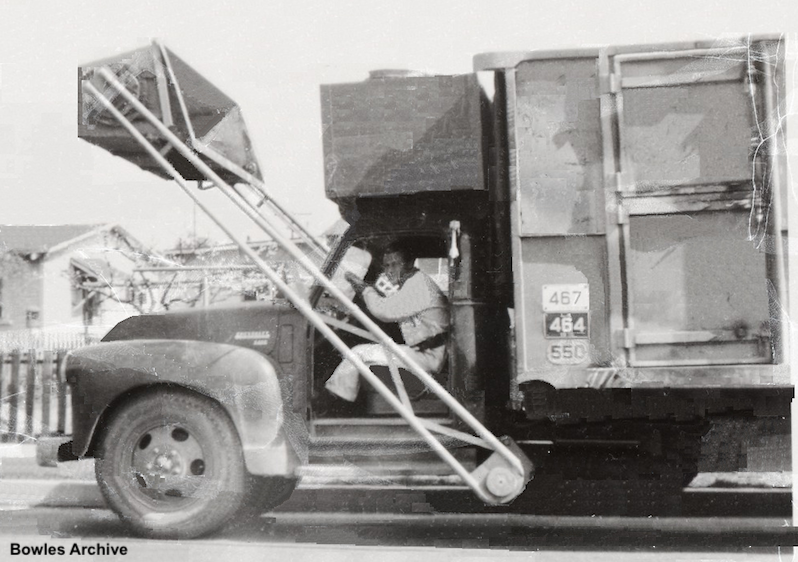
1952: The first Western Body & Hoist front loader attachment (photo re-touched for clarity)
In the immediate post-war years, the western half of the United States seemed to lag behind somewhat in modernization of refuse collection bodies. Rear and side-loading compactor bodies multiplied in the east and mid-west, but were far less visible in the Golden West. Manufacturers such as Gar Wood, Heil and Dempster would take a few years to set up plants there, and the inherent economy and long tradition of the open-top refuse truck probably contributed to its staying power. However, these lightweight, high-sided bodies were notoriously difficult to load. Thus, the creative minds of few small shops in the Los Angeles area set about to adapt what was then known as a "Truck Loader" attachment to the purpose of filling the common rubbish body.
Western Body & Hoist was originally located in the city of Maywood, but eventually moved to a new shop at 8901 Juniper Street in Los Angeles. They were one of the first companies to build front loaders for refuse trucks. In 1952, the same year that Vince Bowles and Phil Gentile built their first fixed-bucket front loader attachment for residential refuse collection, Western produced their first offering. This first Western was an attachment loader for a standard open-top refuse body, consisting of tubular steel lift arms powered by under-body cylinders and operating through a torque-tube arrangement. Western devised a novel means for tilting the fixed loading bucket by way of a single hydraulic cylinder, which rotated the bucket on bearings where it attached to the lift arms. This would become the pattern for the front load refuse truck in California, and with some modification, remains basically the same as the most current models built today.
It has been generally accepted that Bowles was first, and it was Vince Bowles himself who photographed the truck of his competitor shown here. However, the Bowles and Western loaders arrived on the market so close to each other that it is probably irrelevant which one was actually first. This was the beginning of rivalry in between the two companies that would extend through the next two decades, the golden years of front loader development.
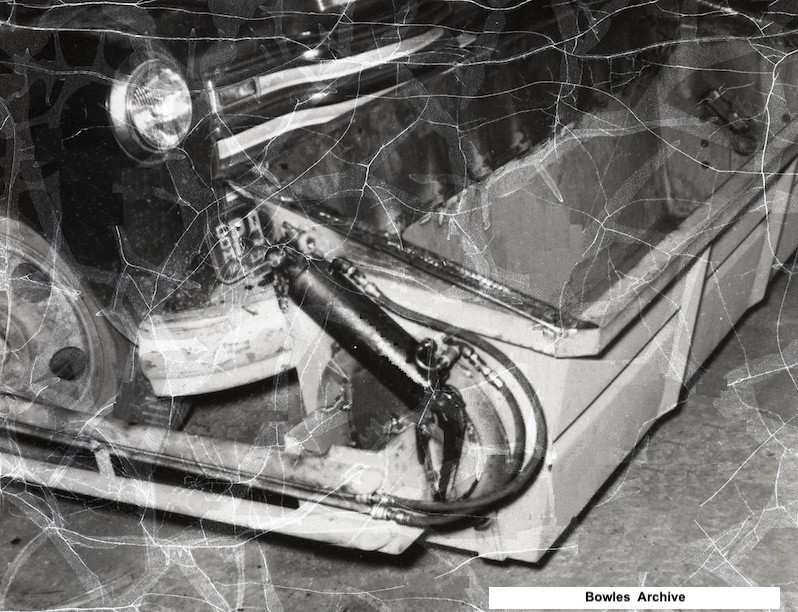
Western's fixed bucket could be rotated on bearings by a single actuator cylinder
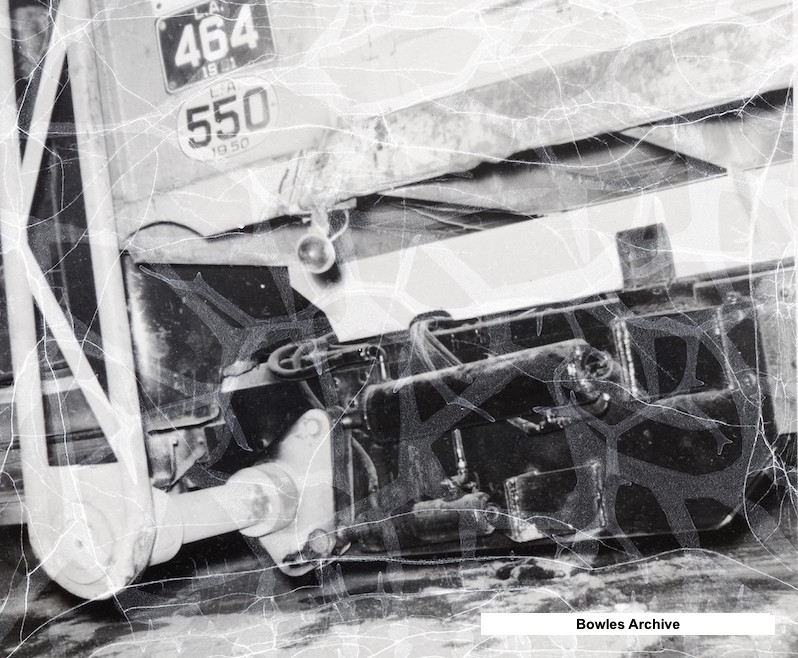
Detail of the under-body lift cylinder and torque tube
The Following images show are annotated "first Western", by photographer S.Vincen Bowles. These were reproduced from the original negatives by Zachary Geroux. The negatives were badly damaged, and thus the images are poor. Nonetheless, we are fortunate that Vince Bowles took so many photographs of all types of refuse trucks, preserving most of the visual history that remains of this era in California refuse bodies.
The truck is a circa-1950 Chevrolet, and the body appears to have started its life as a hand-loaded type, with a full-height side loading door. The L.A. license placards are for 1950, 1951 and 1952. Western Body & Hoist most likely added this loader to a customers truck already in service, a relatively inexpensive job that would appeal to small haulers.
Click on images to enlarge, and use browser back button to return
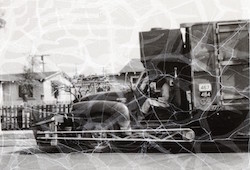
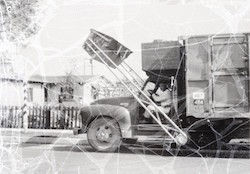
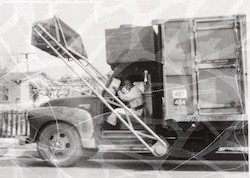
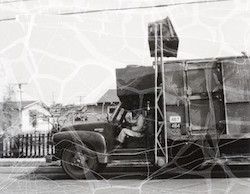
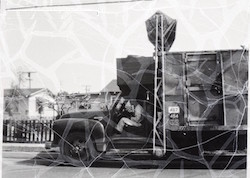
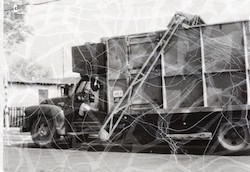
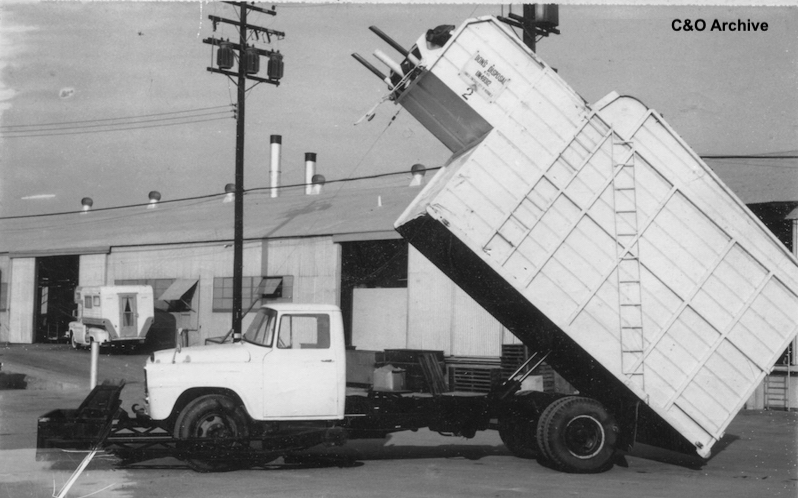
Interesting late 1950s International A-series truck has the lattice-and-tube style arms with a top-pack body. This may have originally been a non-compacting body converted to a top-pack at a later date.
|
By the mid-1950s, Western was building complete refuse bodies with loaders as a packaged unit. The hydraulically-tilted fixed-bucket remained, but lift arms were made of welded box-channel sections. It is believed that they also made a side bucket-loader version, and also lift arms with forks for detachable containers became optional, to compete in the growing commercial container market. The forked setup used two hydraulic tilt cylinders, one at the end of each lift arm to cope with the increased weights of the larger containers. Although competitive with Bowles, Western still lacked a compaction front loader. This problem would be soon remedied by way of acquisistion.
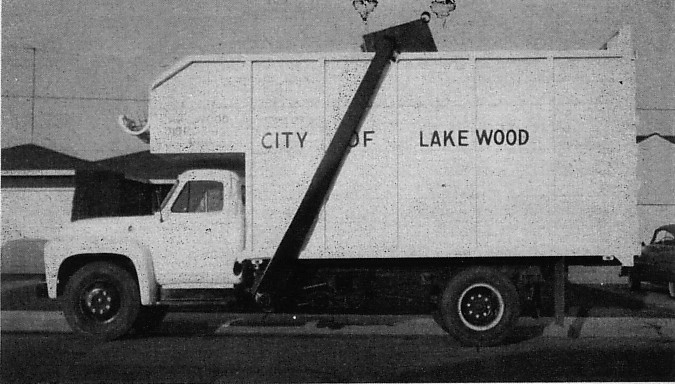
1955 Western front loader on Ford chassis used by a contractor for the Lakewood, CA
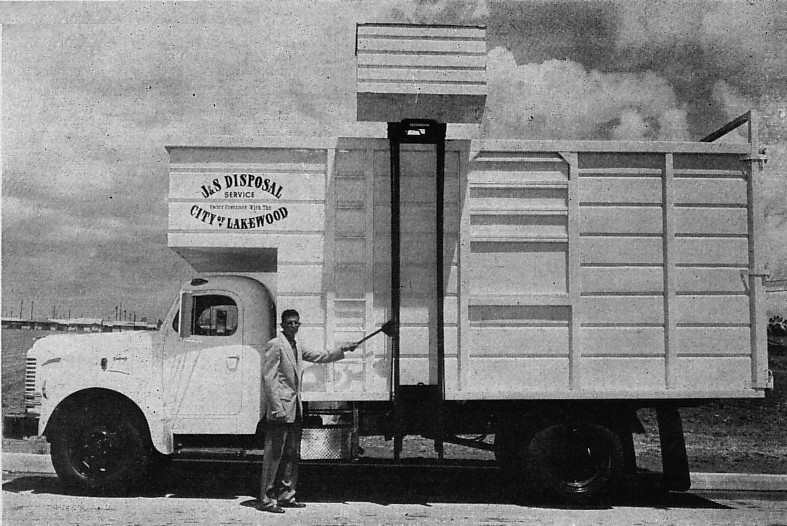
J & S Disposal also won a contract with Lakewood in 1955. This Reo has a side loader body believed to have been built by Western
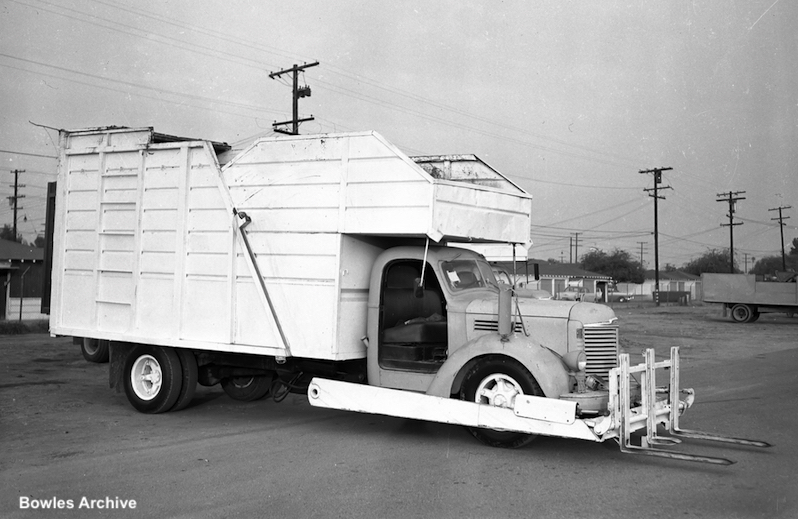
This City of West Covina front loader may be the first Western Body & Hoist detachable-container model.
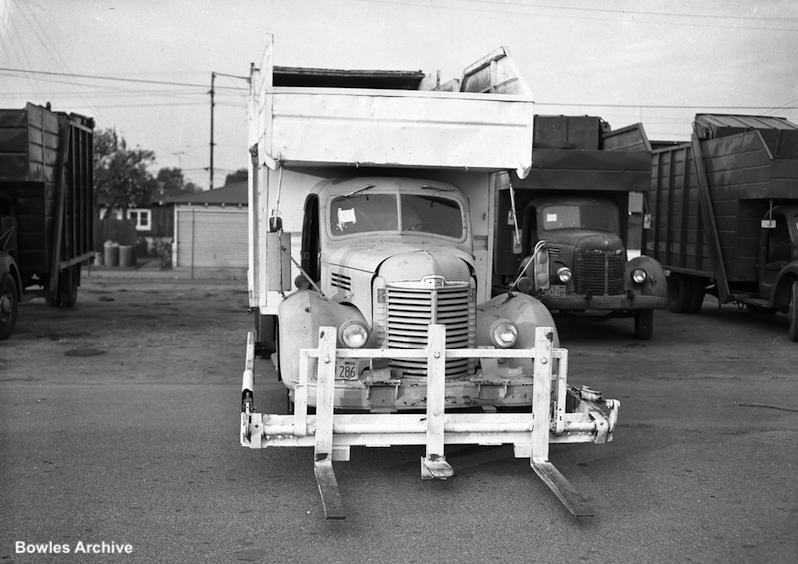
In the background, the city had several more fixed-bucket Westerns for residential collection
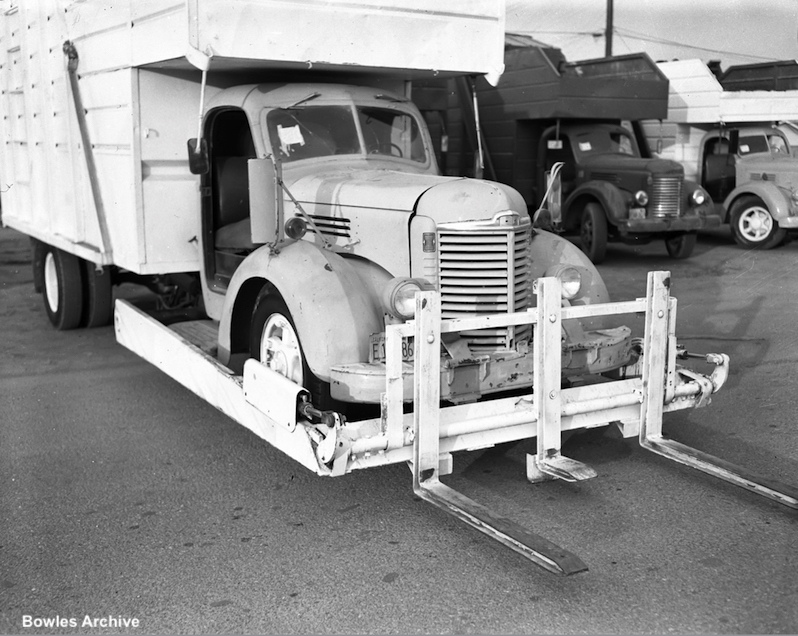
This battle-worn K-Series International truck is at least ten years older than the circa-1956 body.
Note the wear block (bolted to the center container support) to keep the forks from touching the ground.
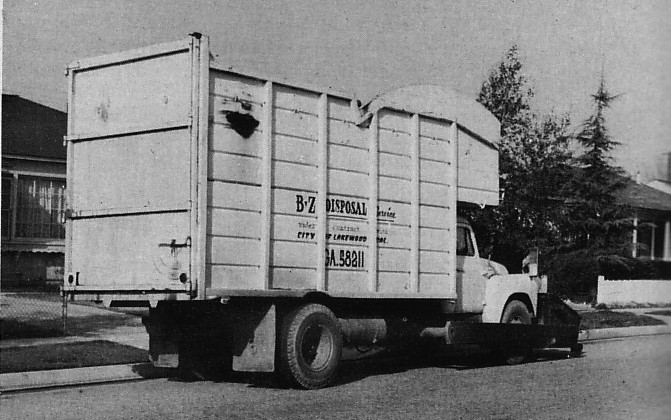
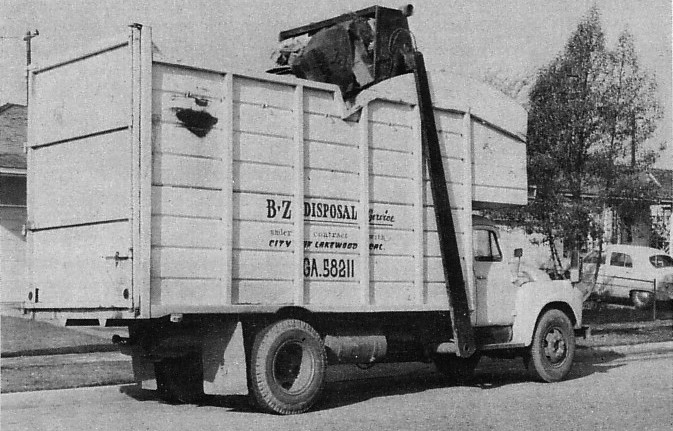
Circa 1957 photo of B-Z Disposal Western front loader dumping action
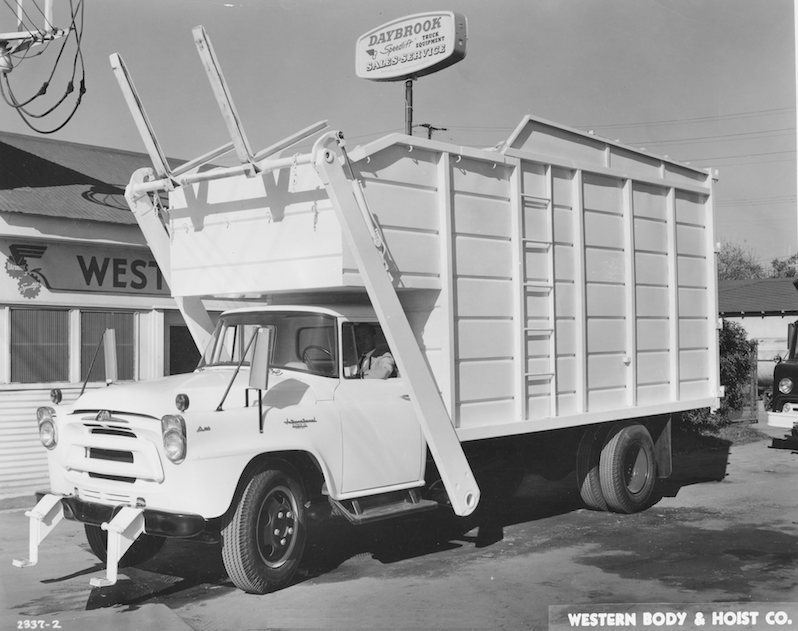
Fresh off the shop floor, circa 1957, this detachable front loader has bumper stops for the fork shaft



9/9/18
© 2018
All Rights Reserved
Photos from factory brochures/advertisements except as noted
Logos shown are the trademarks of respective manufacturers
|
|